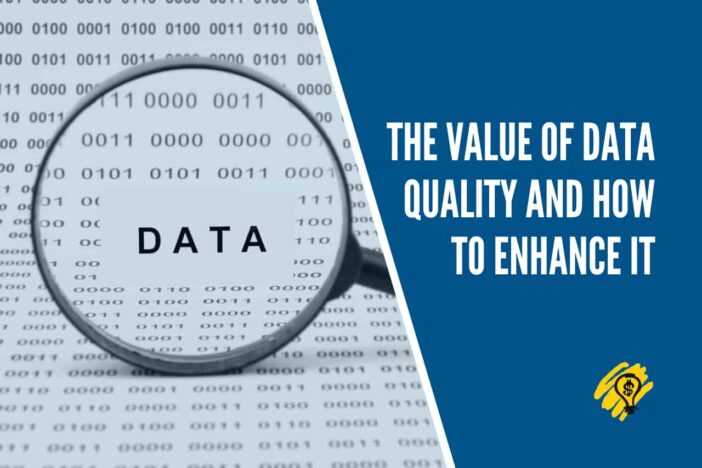Data quality is one of the most important aspects of any business. If you have bad data, it can lead to all sorts of problems, such as inaccurate reports, incorrect decisions, and lost customers. On the other hand, if you have good data quality, it can lead to increased efficiency, better decision-making, and higher profits.
In this blog post, we will discuss the value of data quality and how you can enhance it in your organization.
What is good data quality?
Data quality is a measure of how accurate, consistent, and complete your data is. If your data is accurate, it means that the information is correct. If it is consistent, it means that the data is formatted in a consistent manner across all of your records. And if it is complete, it means that all of the relevant information is included in each record.
Data quality can be improved by using data management tools and techniques such as data profiling, metadata management, and establishing a DQ standard across the organization. Data profiling helps you to identify and correct any inconsistencies or inaccuracies in your data. Metadata management helps you to track and manage the different types of metadata associated with your data. And establishing a DQ standard helps to ensure that all of your data is accurate, consistent, and complete.
Establish a DQ standard across the organization
Once you have determined the value of data quality and what is necessary to enhance it, the next step is to establish a data quality standard across your organization. This will ensure that all departments are aware of the importance of data quality and understand how to improve it. It also sets clear expectations for everyone involved in creating, managing, or using data.
There are many different ways to establish a data quality standard. One common approach is to create a data quality policy or charter. This document defines the goals and objectives of data quality management within your organization, as well as the roles and responsibilities of everyone involved. It can also include specific guidelines on how to achieve and maintain good data quality.
Another option is to use standards developed by external organizations, such as the International Organization for Standardization (ISO). ISO has a number of standards related to data quality, such as ISO/IEC 27001 on information security and ISO/IEC 15459 on master data management. If you decide to use an external standard, be sure to tailor it to your specific needs and make sure everyone involved understands and agrees to abide by it.
Design and implement DQ dashboards for monitoring critical data assets, such as master data
Design and implement DQ dashboards for monitoring critical data assets, such as master data. By doing this, you can gain an understanding of how well your data is being managed and where improvements can be made. Critical data assets should be given extra attention, and having a dashboard to monitor these will help ensure that they are always of the highest quality.
Master data is a good example of a critical data asset that requires careful attention. If it is not accurate and up-to-date, then it can cause problems for the entire organization. A dashboard designed specifically for monitoring master data will help you keep track of its quality and make sure that any issues are addressed quickly. This will help ensure that your business runs smoothly and without any disruptions caused by bad data.
Move from a truth-based semantic model to a trust-based semantic model
There is a move away from the traditional “truth-based” semantic model to a new “trust-based” semantic model. The truth-based semantic model is based on the assumption that there is one correct version of the truth, and that data should be cleansed and standardized so that it conforms to this single version. However, with today’s big data volumes and increased variety of data sources (including unstructured data), it has become increasingly difficult to maintain a single version of the truth. As a result, many organizations are moving to a trust-based semantic model, which accepts that different people may have different views of the truth, and focuses on ensuring that data is sufficiently reliable for its intended purpose. This shift to a trust-based semantic model requires a different approach to data quality management, which is discussed in the following sections.
The value of data quality is becoming more and more evident, as organizations strive to make better use of their data assets. There are a number of tools and techniques that can be used to enhance data quality, including data cleansing, standardization, metadata management, and data profiling.
Establishing a data quality standard across the organization is essential for achieving high-quality data. And finally, it is important to have a system in place for monitoring and tracking the progress of data quality initiatives. By following these steps, organizations can ensure that their data is of the highest quality and can be used to maximum effect.





